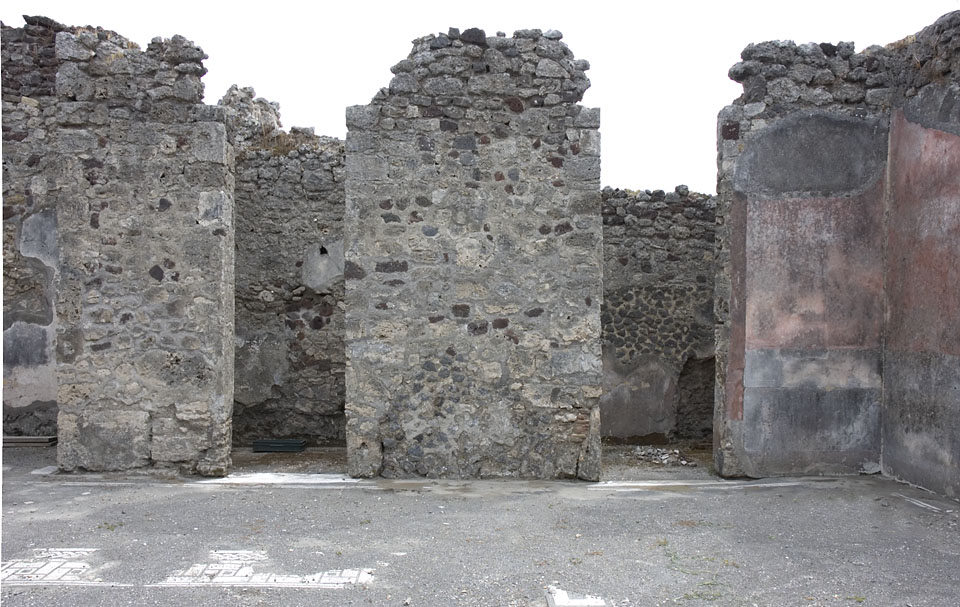South Wall
Description
A. Karivieri & R. Forsell
The following description presents the wall previous to the restoration of 2008/9. The wall consisted of three separate sections divided by the door openings towards rooms f and h.
The E section of the wall is built in opus incertum and consists mostly of limestone, some cruma, and a couple of tuff pieces. The stones in the filling are of mixed sizes from 5x12 to 20x15 cm. There are larger limestone blocks in the lower part of the wall. The door opening in the west is made of large Sarno limestone blocks and one piece of cruma. In the east the corner of ala h is built of large limestone blocks in the lowermost part. The fourth block from the floor level in the eastern corner has plaster coating on the lower and inner face. This block was probably reused for the construction of this wall. In the centre of the wall at floor level there is a large limestone block with an upper face only 3-5 cm above floor level. The large block seems to continue well below the level of the mosaic floor.
The middle section is located between the south wall of atrium b and rooms f and g. The western edge, which forms the eastern doorpost of the door opening into room f, is made of Sarno limestone blocks, and by the lowest block a filling of eight courses of bricks. The eastern edge of the wall, which is the doorpost of room g, is built of large limestone blocks, up to the height of 1,80m with smaller stones above. The wall in between is built in opus incertum and consists of mostly lava, some cruma and limestone up to the height of 2.30m. Above there are pieces of limestone, cruma and lava. In the lower part of the wall the stones are smaller while in the upper part the stones are mainly larger. This is an indication that the lowermost part of the wall belong to an earlier construction phase than the upper part.
The W section of the wall is almost completely covered by wall plaster, thus the masonry could not be studied. The door opening to room f is built of large Sarno limestone blocks; above the height of 2.10m the blocks are smaller.
Wall plaster:
The W section of the wall is almost completely covered by wall plaster. The wall plaster is preserved up to the height of 2.80m. Above it there is c. 0.6m of plaster coating. The painting is preserved in the dado and the middle zone and to some degree in the predella. However no motive can be distinguished. According to Mau however, there was a panel with a theatrical scene where two masked women were depicted (Mau 1876, 163f.).
The lower part of the dado is coloured red with yellow dots. The upper part of the dado is black and today no design can be distinguished. The predella had a lower border of 0.08m where there are remains of blue colour. The colour of its upper part cannot be determined. Red borders surrounded the middle zone.
The layer of wall plaster stops, with a facetted edge, 0.17m west of the door opening. This indicates that wooden panels framed the door.
On the E section of the wall are remains of plaster under coating in several places, but no actual wall painting remains. In the central section too only plaster coating is preserved, visible in the lower part of the wall.
State of preservation:
The upper part of the wall is missing and the uppermost part is reconstructed. During the restoration in 2008/9 the wall was rebuilt above the door openings.
E part l. 1.60; pr. h. 4.35m.
Central part l. 2.50; pr. h. 4.42m.
Limestone blocks in the W: h. 0.41-0.72m.
W part: l. 1.56m; h. 4.32m
Dado: total h. 0.9m; lower part h. 0.26m; upper part 0.64m

